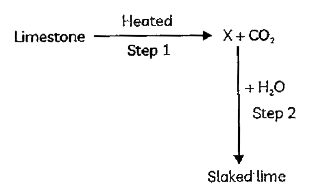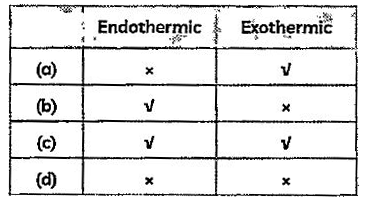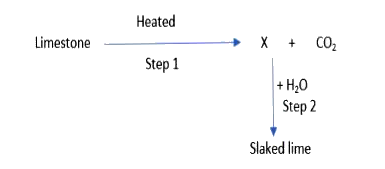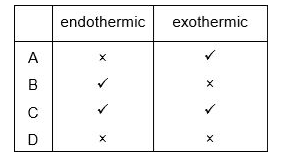A student performed an experiment by taking different metals and dipping them in salt solutions in test tubes marked 1,2,3 and 4 as shown in the figure below :
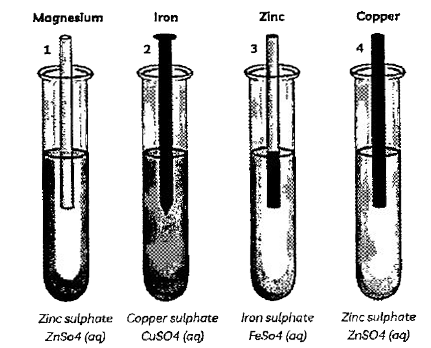
Indicate the correct option from the given table which represents any reaction taking place in the test tubes :

The correct Answer is:C
Displacement reaction will take place in the test tubes marked 1,2 and 3 as magnesium is more reactive than zinc ,iron is more reactive than copper and zinc is more reactive than copper .Whereas ,no reaction will take place in the test tube marked 4 as copper being less reactive than zinc will not be able to displace zinc from zinc sulpjate solution.
Topper's Solved these Questions
Similar Questions
Knowledge Check
A student performed the first set of experiments with four test tubes containing solutions and metal pieces as indicated in the figure. In the second set of experiments, the metal pieces are interchanged between test tubes P and Q and also between test tubes R and S.

In which test tube(s), no reaction will occur in both sets of experiments ?AP and QBRCSDR and SA student was given four unknown solutions in test tubes marked A,B,C and D and asked to test them with universal indicator solution. He observed that on putting universal indicator solution, the solutions A,B,C and D turned blue, orange, green and red respectively. The test tube which contains sodium chloride solution is:
AABBCCDDSakshi performed two experiments as shown in figure 1 and 2, and recorded her observations in the table.
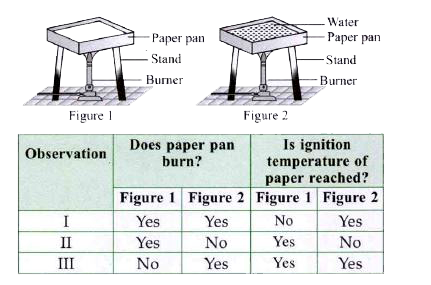
Find out the correct observation and the reason behind it from the options given below.AI, paper has a higher ignition temperature than water.BII, fireproof paper pan is used in figure 2.CIII, paper is non-inflammable.DII, heat supplied to the paper pan is transferred to water by conduction, so ignition temperature of paper is not reached in figure 2.
Magnesium powder was added to two different salt solutions in beakers (I) and (II) as shown in the given figures. Answer the questions that follow:
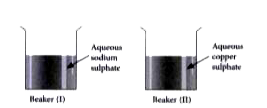
Write an equation for the reaction that takes place.
View SolutionSameer took sulphur powder on a spatula and heated it. He collected the gas evolved by inverting a test tube over it as shown in the figure.
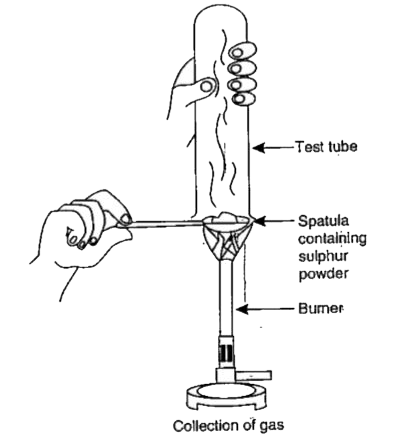
Write a balanced chemical equation for the reaction taking place.
View SolutionTwo students performed the same experiment separately and each one of them recorded two readings of mass which are given below. Correct reading of mass is 3.0 g. On the basis of given data, mark the correct option out of the following statements.

View SolutionA student added a piece of zinc metal each to four different test tubes containing different solutions as given below. The test tube in which no reaction was observed, contains
View SolutionIf we are given two test tubes marked A and B. In first test tube, NH4OH solution is taken and in other NaOH solution is taken. Which salt is used to identify them?
View Solution

